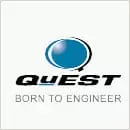As product users demand more and more product performance value for their money, product cost management becomes imperative. Product cost management begins as early as the conceptualization and design stage in the product life cycle (PLC). About 70% of product cost commitment decisions happen during these initial phases and the rest being decided by the time the product gets into manufacturing. Cost modelling comes in handy while pondering on design alternatives during design conceptualization and during design modification to meet cost targets. Product design characteristics rather than manufacturing processes govern the product cost model during the early phases of the PLC. Product/part properties such as tensile strength, critical parameter tolerances such as fatigue and damage tolerance, design parameters of requirements and constraints such as operating environment, maintainability & accessibility, will drive cost modelling. As we shift to the right side of the PLC, manufacturing processes will start governing the cost modelling. Costing techniques and tools change accordingly.
There is an increasing demand in aero-engine products for better efficiency and environmental performance while maintaining low product cost. Unlike performance, the theory behind cost effectiveness is not well understood. Check out QuEST’s white paper that proposes a unit cost modeling methodology applied to an aero-engine part. An objective of the cost model is to allow engineers to understand the breakdown of product cost, identify “key cost drivers” and hence manage the product cost. A value driven design concept is outlined to understand cost impact of design decisions at the early design stage through Unit Cost Model.
Click here to access the Unit Cost Model for Product Cost Management white paper.
